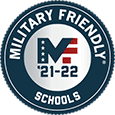Whether you work on a construction site or a loading dock, cranes are a central part of your workplace. Knowing the different parts of the cranes you use, along with their functions, can help you optimize operations and reduce risks. Check out our guide below to learn about the key parts of a crane and what purpose they serve.
Table of Contents
Common Types of Cranes
1. Mobile Crane
A mobile crane travels on wheels to transport loads between locations. Mobile cranes are widely used in construction, infrastructure projects, and various industries where their mobility and adaptability are essential for handling diverse lifting requirements.
2. Tower Crane
A tower crane is fixed either to the ground or to a structure on a concrete base and transports loads vertically or horizontally along a predetermined path. Key parts of a tower crane include a main load line, tower peak, main winch and motors, counterweight, counter-jib, turntable, mast, foundation, jib, trolley, operator’s cab, hoist, and hook block. Tower cranes are commonly seen in urban construction projects due to their ability to reach great heights and lift substantial loads while occupying minimal ground space.
3. Lattice Boom Crane
A lattice boom crane is a type of heavy-duty construction crane characterized by its lattice-like structure of interconnected steel beams that form the main boom. This design provides strength and stability, allowing the crane to lift and move extremely heavy loads with precision. Lattice boom cranes are commonly used in the construction and shipping industries.
4. Fixed Cab Crane
A fixed cab crane is a type of mobile crane in which the cab is fixed and cannot move independently from the crane’s movements. This design offers a stable operating platform for heavy loads. Fixed cab cranes are often used when precise lifting and positioning are required, like for construction sites and material handling operations.
Parts of a Crane to Know About
Whether you’re using a mobile crane or a tower crane, these are the general parts of a crane you should know about.
Primary Parts
- Hydraulic booms: A long pole-like structure that extends and contracts using hydraulic pressure
- Lattice booms: Made of steel bars that form a lattice pattern, this boom type has a fixed length and distributes the load’s weight across the lattice framework
Supporting Parts
- Outriggers & Outrigger Pads: The outrigger stabilizes the crane by offsetting the load, thus preventing the crane from tipping over due to excess weight.
- Jib: The jib is fixed and connected to the mast. This attachment can be added and removed as needed.
- Luffer: a luffer is a type of jib that’s hinged, allowing it to move vertically.
- Rigging Equipment: Rigging equipment consists of various hardware that secures the load before it’s transported. Examples include a hook, load block, hook block, wire rope cable, turnbuckles, spreader bars, lifting beams, eyebolts, and pulley blocks.
- Lift Plans: It’s important to make a plan outlining what load will be lifted, how heavy it will be, and where it will be transported. This is a time for workers to identify potential hazards and put measures in place to minimize them.
Mobile Crane Signals
Operating Parts
- Engine: The engine, which can be powered by diesel or electricity, is what powers the crane.
- Controls: The operator uses various controls to direct the crane’s every move, including rotation, acceleration, and lifts.
- Certified Operator: Per OSHA safety guidelines, any worker who operates a crane must be legally certified to operate the particular crane type being used. Operators must also maintain certification requirements. These regulations help workers minimize accidents and injuries on the job site.
Additional Parts
1. Floats, Foundation, Tracks, or Wheels: These are what the crane moves on or along to transport the load.
- Floats: Floating cranes can be used on oil rigs and at ports
- Foundation: Tower cranes and other static cranes are secured to a concrete foundation to provide a stable base for lifting heavy loads
- Tracks: Mobile cranes can move along tracks, which are placed on smooth ground, to enhance the crane’s stability
- Wheels: Other mobile cranes have wheels with treads that enable them to travel across smooth and rugged terrain
2. Trolley: The trolley supports the hoist and the wire rope.
3. Turntable: The turntable enables tower cranes and other crane types to rotate 360 degrees at the top.
4. Tower Peak: The tower peak is located at the top of the tower or mast and supports the jib and counter-jib.
5. Main Load Line: For mobile cranes, the main load line is a cable connecting the hook block to the boom. For tower cranes, it consists of wire ropes and sheaves that create the pulley system, allowing them to raise and lower loads.
How to Choose a Crane
Choosing the right crane for the job can be overwhelming considering how many options are available. If you’re not sure where to start, consider the following three factors.
- Weight and height capacity: Different crane types have different weight and height capacities. Use the crane load chart to determine how much weight the crane can lift at different heights.
- Terrain: Whether the terrain at the job site is even or rugged will impact your crane selection. Be sure to pick a crane that can handle the terrain.
- Budget: Cranes are available at a range of prices. Determine your budget first, then search for cranes within that price range.
Crane Safety
Along with knowing the parts and functions of a crane, it is important to be informed on some lifting best practices. Knowing the parts of a crane and knowing the safety precautions will help ensure a safe work environment. Here are some quick tips to keep in mind for crane lifting safety:
- Look Around: Check your surroundings when lifting. This means conducting a visual inspection of the crane parts to make sure nothing seems out of place. Also, look around the site and make sure that when you lift all personnel are a safe distance away from the lift zone and its perimeters.
- Don’t Exceed the Lift Limit: Make sure you know how much weight your crane is equipped to lift—and don’t exceed that number. When you do secure the appropriate amount of weight to the hook, make sure that it is properly attached.
- Stay Close: If you are in the operator’s cabin and are facilitating the crane, ensure that the crane is as close as possible to the load being lifted. This will help with control and stability. Additionally, try to keep the load as low to the ground as is reasonably safe.
- Know Mobile Crane Signals: Due to the loudness of a construction site, workers use hand signals to communicate with the crane operator. The operator needs to look at the hand signals of the worker to ensure when the proper time to lift, move, and place the load.
Become a Certified Crane Operator at Heavy Equipment Colleges of America
Whether you’re a novice in the heavy equipment industry or a seasoned construction worker, be sure to check out Heavy Equipment Colleges of America (HEC). From crane safety programs and equipment maintenance to road construction and site management, we provide comprehensive training for various roles in the construction industry, including crane operators.
We offer accelerated training programs led by field experts to help you reach your professional goals. Once you complete our crane certification training, you’ll be ready to take on any role as a crane operator. Learn more about our crane training programs in California (San Bernardino), Georgia, and Oklahoma today.




